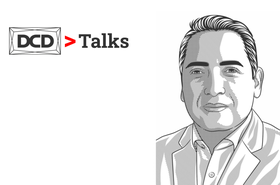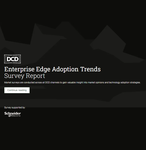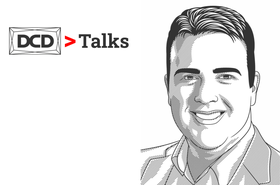While hyperscale data centers are often in the sustainability firing line, Edge data centers have been flying under the radar.
In a conversation at DCD>Connect Silicon Valley, Carsten Baumann of Schneider Electric was of the opinion that not enough attention is being paid to Edge data center deployments in terms of sustainability.
“People think Edge is less of an evil because it’s a smaller deployment,” said Baumann.
Now, an Edge data center is indeed likely to be a smaller deployment, located closer to the point where the data is being generated or consumed. In isolation, they do use less power than their hyperscale counterparts.
“It's easy for us to talk about building a 100, 200, 600MW data center, they are always the focal point of the conversation, but we’re neglecting all these Edge applications,” said Baumann. “By 2030, all these Edge applications combined will consume more energy than all the hyperscalers together.”
Although a slightly alarming statistic, Baumann believes that this presents both a unique opportunity – and responsibility – for a renewed focus on sustainability at the Edge, particularly as 2030 is a little over six years away.
“It's a big challenge because there's so many of them,” said Baumann. “It's relatively easy to run a proof of concept, but with an Edge deployment, the challenging part really comes when you want to scale that.
“All of a sudden, you want to have 10, 100, 1,000 of those nationally or internationally – that's more difficult, and that's where Schneider Electric and other companies can help our clients to solve those problems.”
Baumann explains that once you decide to scale out your Edge deployments, you then have to concern yourself with where you source your energy from.
“IT companies deploy small Edge applications, almost like they’re just plugging in another toaster in their house. It's not a big deal, so therefore they don’t really pay attention to it. But say they have a hotel, and have 1,000 toasters that need plugging in in every room, all of a sudden, it becomes an issue, particularly across different geographic regions.”
But, as Baumann rightly points out, the Edge deployments’ smaller size can work to its advantage. For instance, if you’re only deploying 100 kilowatts, this presents the opportunity to deploy renewable energy, such as wind or solar.
“By utilizing renewable energy creation, it now makes more sense economically and ecologically to deploy renewable energy assets with a small application in, let's say, an urban environment where there might be power constraints.”
Baumann believes the time to act is now. For instance, if we plan to operate our latest Edge deployments for the next 10-plus years, that brings us to 2033. And with so many organizations having pledged to be net-zero by 2030, time is ticking.
“If we want to be net-zero seven years from now, we have to think about it now, and do it now, not in 2029. We have to open the books and figure it out collectively, because we have a social responsibility for us and for the next generations.”
To hear more about sustainability at the Edge, you can check out the full DCD>Talk here.
More from Schneider Electric
-

DCD>Talks Edge computing and infrastructure challenges of AI and the distributed cloud with Andres Vasquez, Schneider Electric
DCD's Claire Fletcher talks with Andres Vasquez of Schneider Electric on Edge computing and infrastructure challenges of AI and the distributed cloud.
-

Enterprise Edge Adoption Trends – Survey Report
A survey report based on research conducted by DCD looking at trends within enterprise Edge adoption
-

DCD>Talks Demystifying the Data Center Industry with Mark Yeeles, Schneider Electric
Mark Yeeles joins us in the DCD>Talks studio at DCD>Connect | London to talk addressing the data center PR problem and how to show the industry in the best light.

